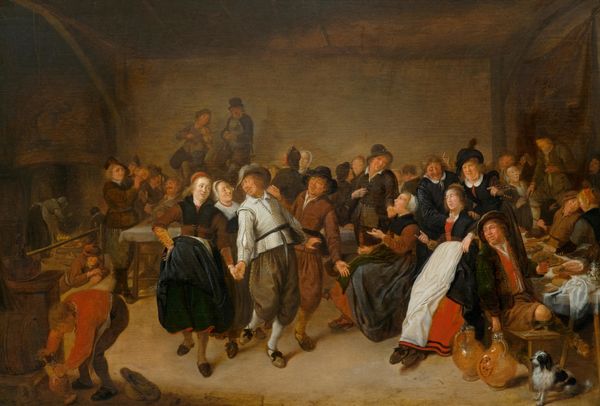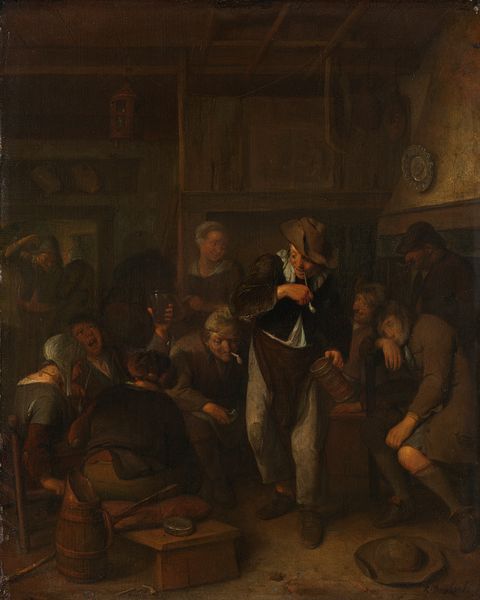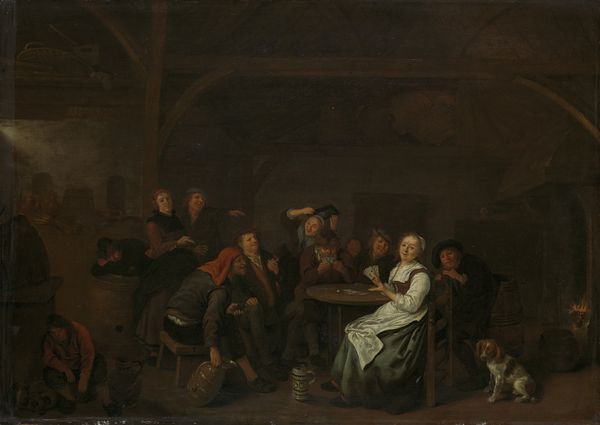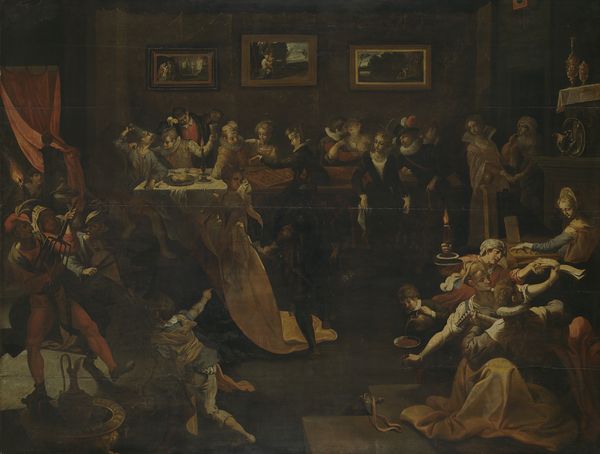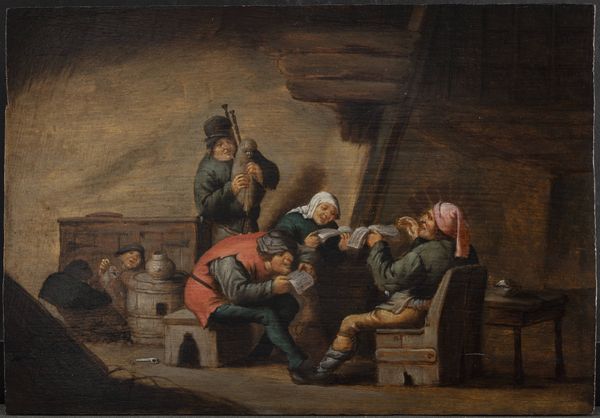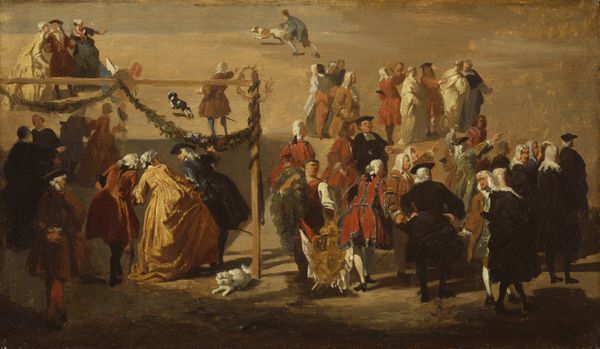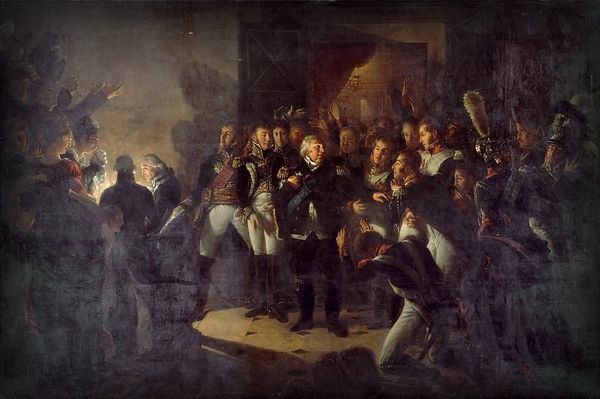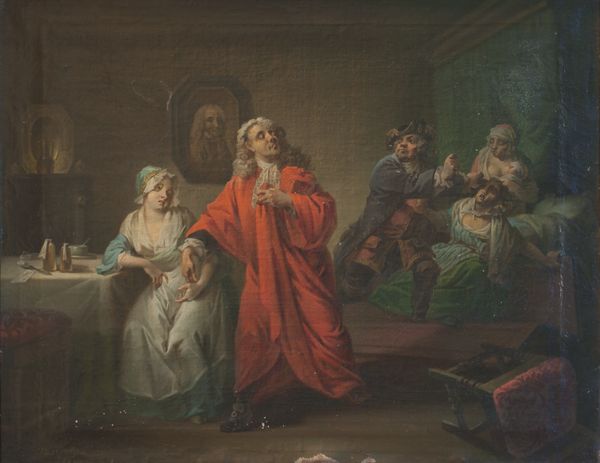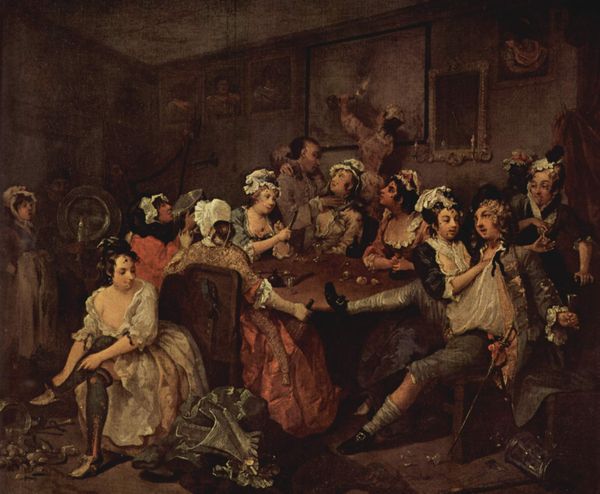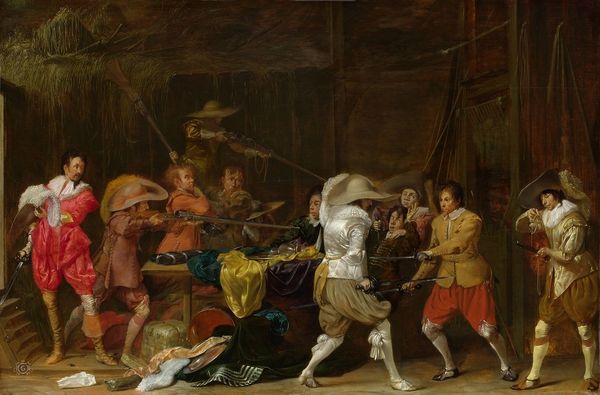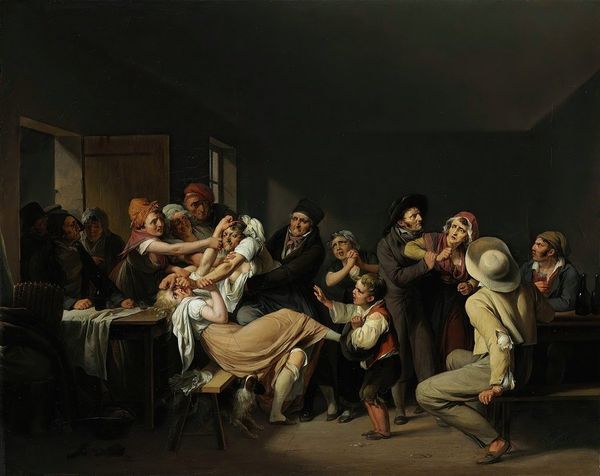
painting, oil-paint, canvas
#
portrait
#
narrative-art
#
painting
#
oil-paint
#
canvas
#
historical fashion
#
group-portraits
#
cultural celebration
#
romanticism
#
genre-painting
#
history-painting
#
academic-art
Dimensions: 60 cm (height) x 74 cm (width) (Netto)
Curator: We are looking at "Julestuen, 13. scene" by C.A. Lorentzen, painted in 1814. It is currently part of the collection at the SMK, the National Gallery of Denmark. Editor: It feels like a freeze-frame from a chaotic party. Lots of figures crowded together, soft light, and a real sense of movement despite being still. Oil on canvas, right? You can almost feel the texture under those layers of aged varnish. Curator: Absolutely. Lorentzen was very interested in capturing contemporary social gatherings. He worked within a formal Academic framework but often depicted everyday life, a kind of narrative genre painting reflecting the cultural values of his time. Note the detail of the period costumes and the interactions between the figures. This wasn't simply about accurately representing people; it was about conveying the customs and expectations of early 19th century Danish society. Editor: The means of representing social rank is interesting. Those in positions of wealth are painted with richer fabrics and in bolder, confident poses. Meanwhile, observe the labor that went into crafting each garment and representing the details—quite a social marker, a tangible distinction manifested through carefully considered materials. Curator: Precisely! The very act of gathering and celebrating, and how this scene reflects broader societal values about domesticity, celebration, and even class distinctions is significant here. Think about the rise of nationalism and the desire to define a unique Danish identity in this era; images like these helped to reinforce it. Editor: Yet the physicality is key—the application of the paint, the blending, and how it all creates the textures and highlights is fascinating. The canvas itself would've been prepped in a certain way; it's not just a surface but an active component of the piece, defining how the paint behaves and, therefore, the final look of the work and how we might reflect upon the material conditions of production in Denmark at this period. Curator: It invites consideration of art’s public role, it's something that can create or consolidate collective identity and ideals. Editor: A snapshot of labor, material, and social structure frozen in pigment and woven onto a simple canvas, with plenty for us to think about today.
Comments
No comments
Be the first to comment and join the conversation on the ultimate creative platform.
